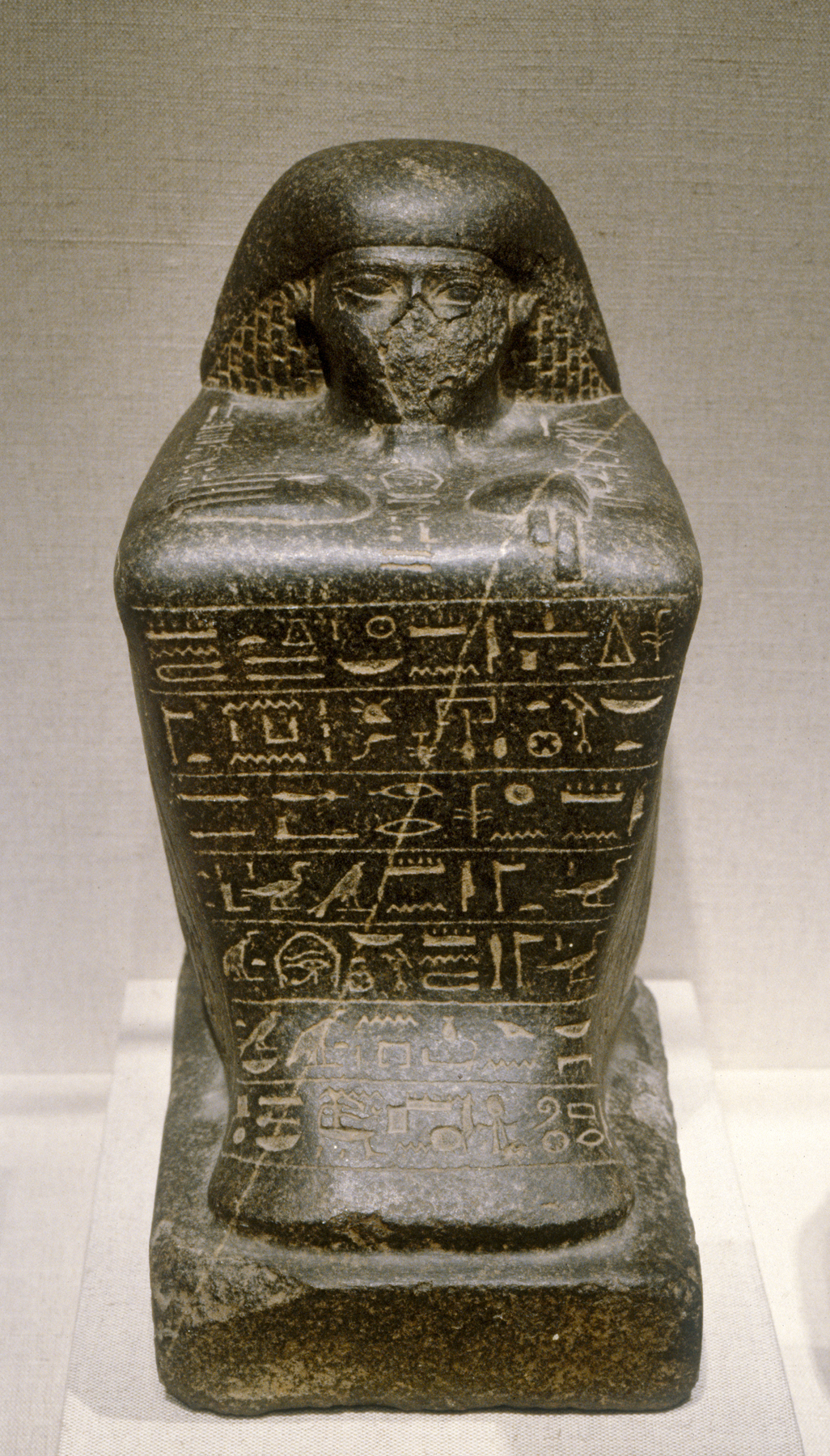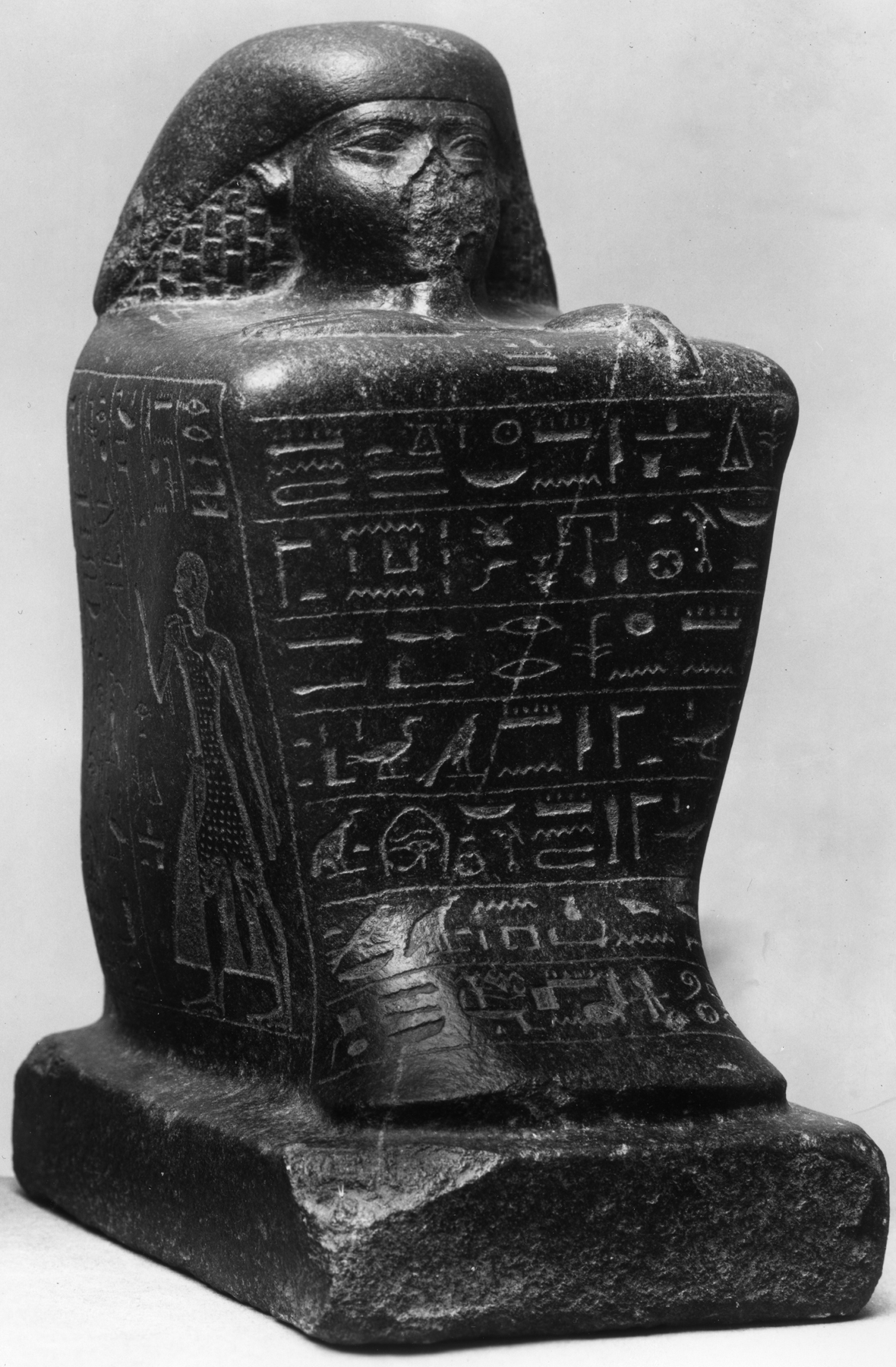Statue of Irj-aa
(Ancient Egypt and Nubia )
Most non-royal statues of the 25th Dynasty were dedicated in temples during the owner's lifetime. They also served a funerary function, perpetuating the donor's name. Offerings continued to be made to the statue long after the owner's death. Irj-aa, a priest of Amen, is shown wearing a double wig, a style fashionable in the New Kingdom. The statue type and wig demonstrate how 25th Dynasty artists drew on earlier periods for inspiration. On the left side of the body is a carving of Irj-aa adoring the Osiris symbol of Abydos, the god's burial place.
Provenance
Provenance (from the French provenir, 'to come from/forth') is the chronology of the ownership, custody, or location of a historical object. Learn more about provenance at the Walters.
Dikran Kelekian, New York and Paris; Henry Walters, Baltimore, 1912, by purchase; Walters Art Museum, 1931, by bequest.
Conservation
| Date | Description | Narrative |
|---|---|---|
| 8/31/1998 | Examination | survey |
Geographies
Egypt, Karnak (Place of Origin)
Measurements
12 1/2 x 6 3/8 x 8 1/4 in. (31.8 x 16.2 x 21 cm)
Credit Line
Acquired by Henry Walters, 1912
Location in Museum
Accession Number
In libraries, galleries, museums, and archives, an accession number is a unique identifier assigned to each object in the collection.
In libraries, galleries, museums, and archives, an accession number is a unique identifier assigned to each object in the collection.
22.141




